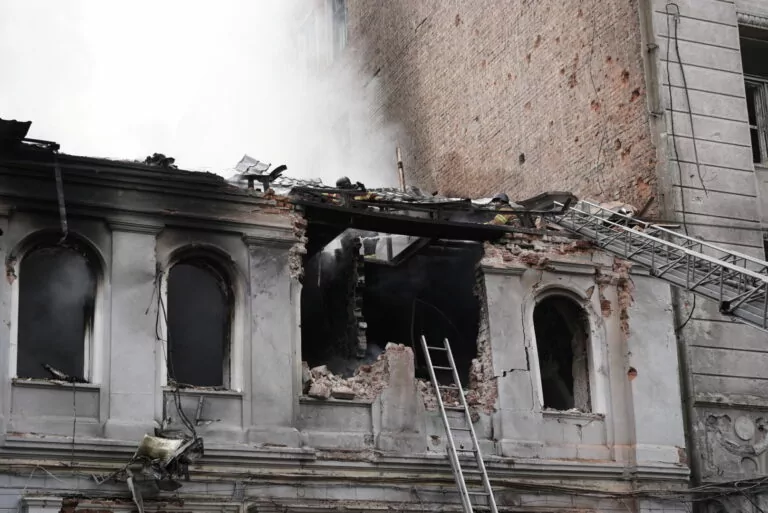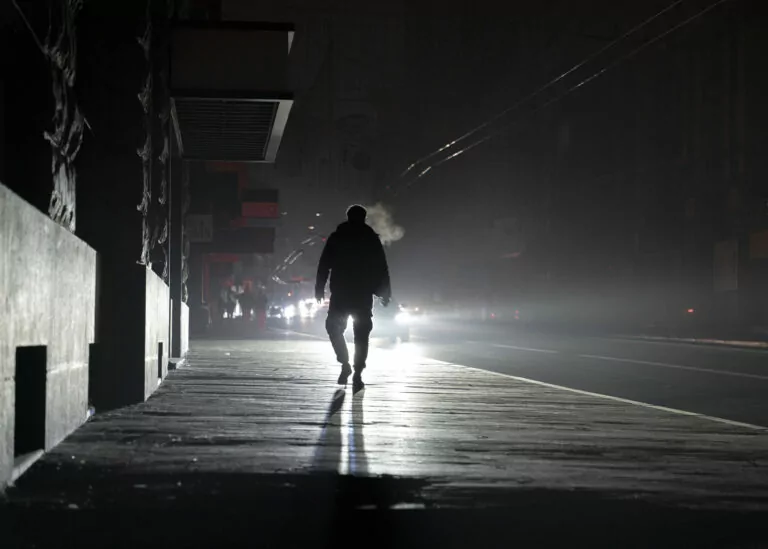Before the war, Kamianka in Kharkiv Oblast was a small village with a population of a bit more than 1,000 people. Their life was as it is in any ordinary village: private houses, a school, a local club, and a church that had recently been renovated. People used to breed cattle and grow vegetables here.
Before the war, it took two hours to get to the village from Kharkiv. Now the same route takes about three hours because of the roadblocks and obstacles. Somewhere the roads are damaged, somewhere you have to drive across the pontoon bridge, as, for example, on the way from Izium.
On our way to the settlement, we drive through mutilated Izіum and Chuhuiv. The consequences of the occupation are being gradually eliminated, however, the broken buildings and empty streets reveal the recent horrors.
At the entrance to Kamianka, we stop to take a look at what the village looks like from a distance.
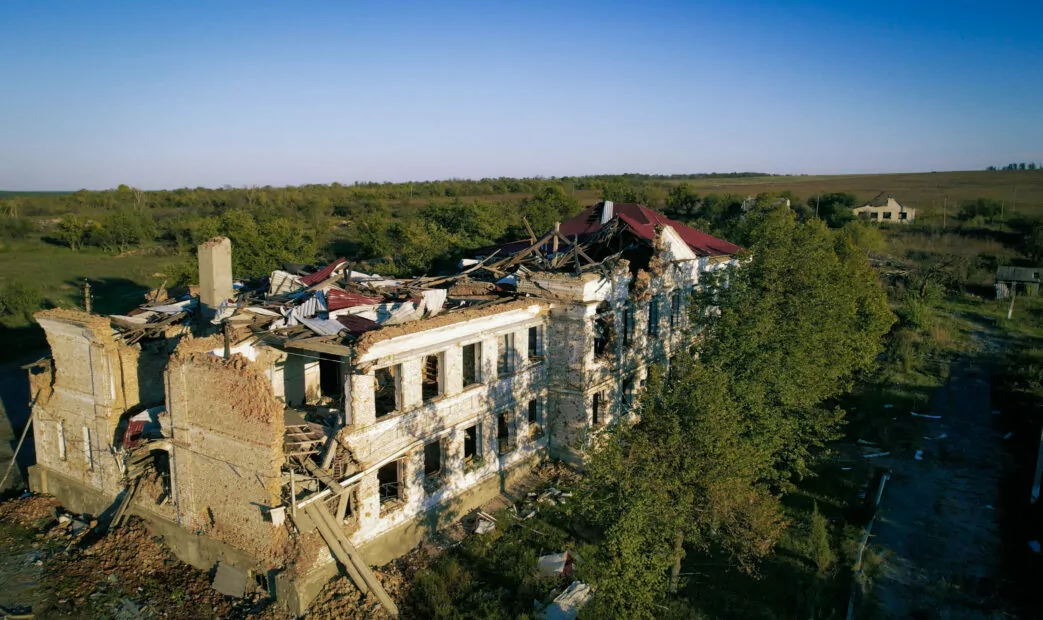
From above we do not see a single undamaged house, but we hope for the best.
There are several main streets in Kamianka, so we decide to drive down each of them hoping to meet people and surviving buildings.
We randomly choose the first street. As we drive we see the picture resembling the apocalypse movie: ruined buildings, burnt machinery, the odious letters Z and the projectile remnants.
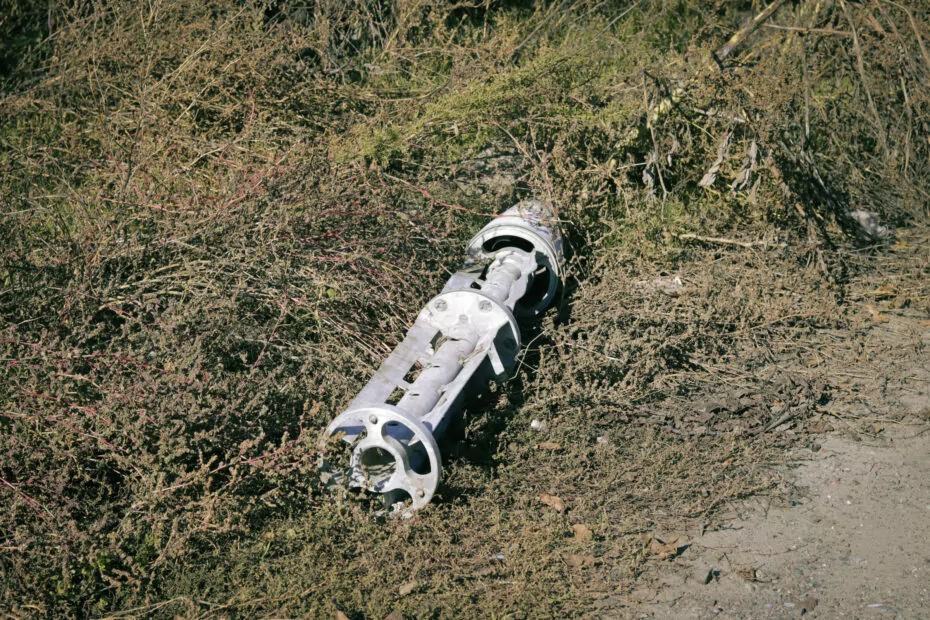
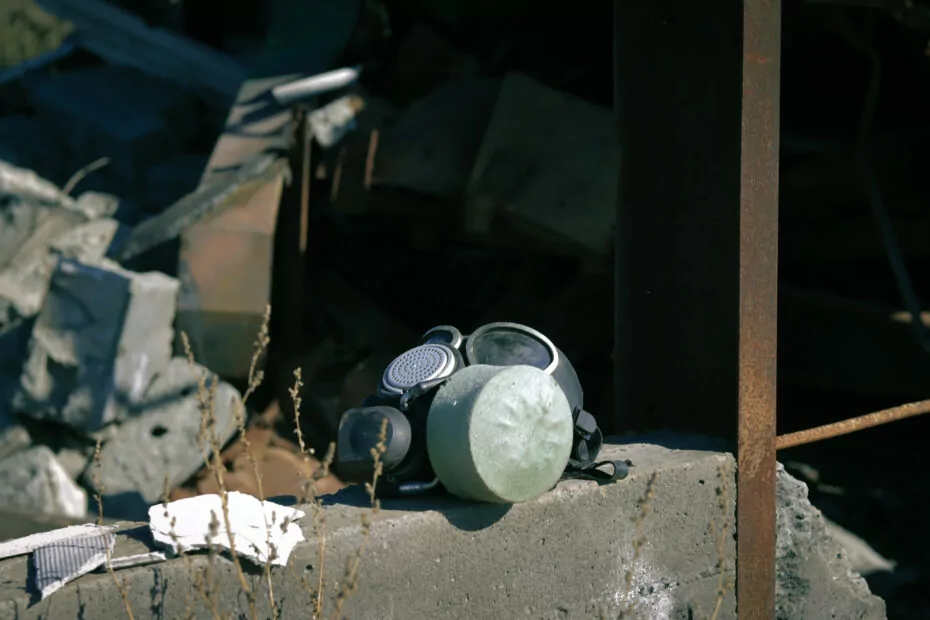
At last, we meet the first person. The man says that he has been in Kamianka since the beginning of the full-scale war.
Out of approximately a thousand people, no more than 10 remained in the village, the others either left or died.
Yurii recalls the events of occupation and all the terrible things that happened. When Russians entered the village, he says, they examined all the basements and threw grenades there. Later they deployed a base in the village. Numerous inscriptions Z and V on the houses are evidence of that.
We decide to check the other part of the settlement.
On the way there we meet a lot of abandoned animals, it seems that there are more of them than people. They are all hungry. We get out of the car to look around and become “hostages” of local cats. For the time of war, the animals have weaned from the people and now begin cuddling up to us. We regret that we have not taken any food with us and share our lunch with the cats.

At the same time, we notice the other residents of the village.
Inna together with her husband came to see what was left of her house. They left the village at the beginning of the full-scale war and now see their house after the liberation for the first time.
Most likely, uninvited guests used their house: there are remnants of shells and ammunition in the yard.
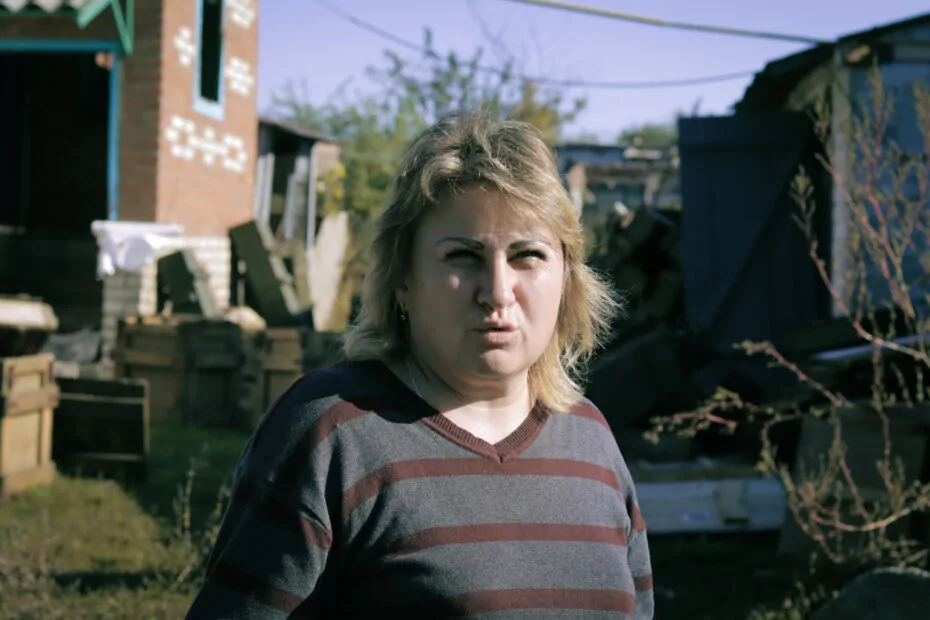

When we enter Inna’s house, we feel deep sorrow. Family photos, someone’s belongings – all that is scattered all over the place and forsaken. The occupants obviously did not care about the place. Have they ever thought about the house owners?
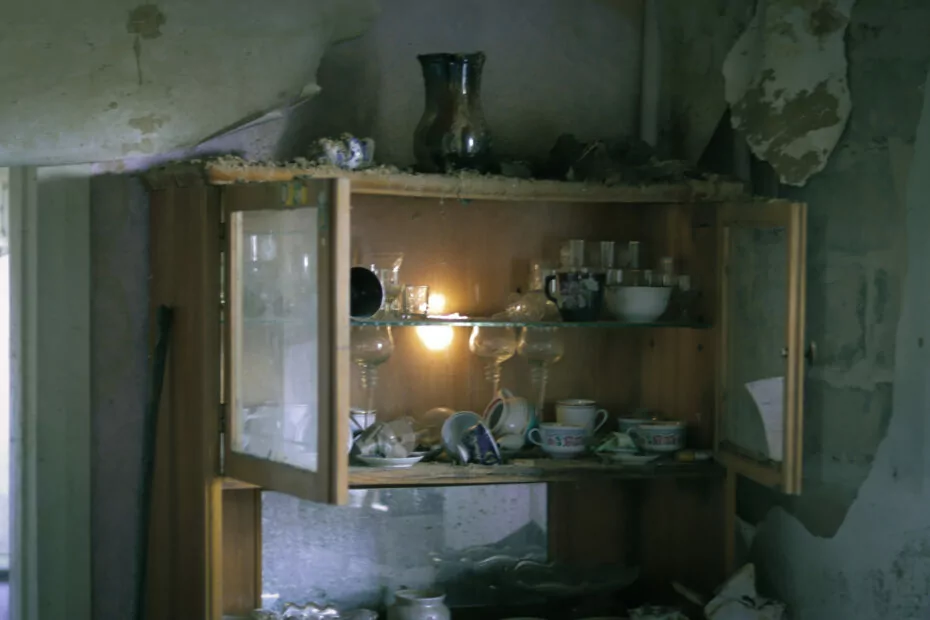
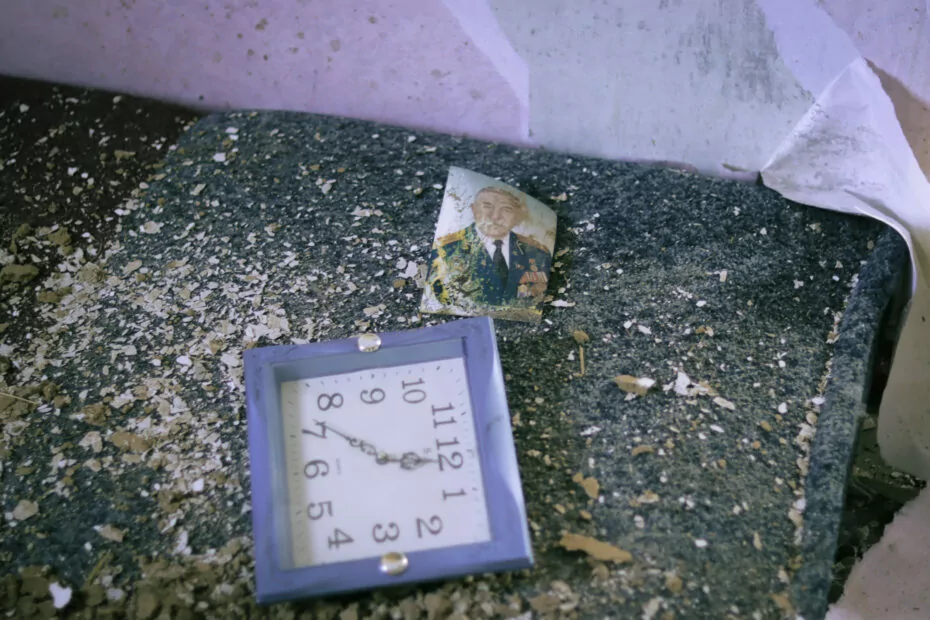
The owners are not going to come back home today. There is no heating and electricity, and they do not have enough money for house rebuilding. There are not even their belongings left to collect here.
In the conversation the woman mentions a carpet they bought before the war. “We can’t find it anywhere,” she says.
We go out of the yard and see the lost carpet: occupants moved it to a neighboring house for an unknown purpose. Judging from the inscriptions, they sold vodka there.
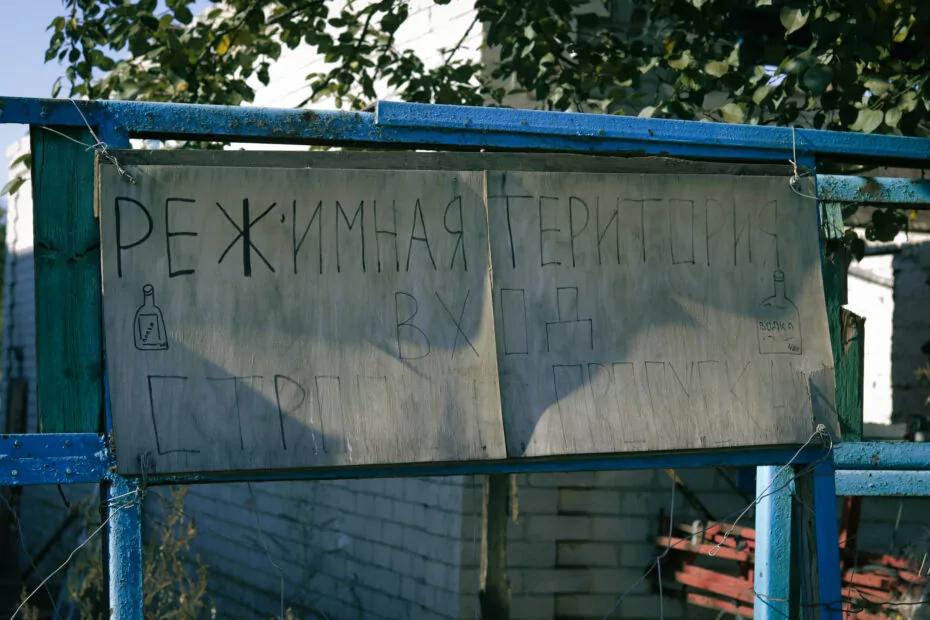
We decide to drive to the local «center» – a district where, in Russians’ opinion, the «strategically important objects» such as a school, local club, and church are located.
We see hangars nearby. Along with agricultural machinery, Russians stored «Grads» here [BM-21 Grad is a self-propelled 122 mm multiple rocket launcher designed in the Soviet Union – ed.]. We go inside and see burnt equipment, Russian soldiers’ belongings, and slightly smoldered grain.
Unfortunately, agricultural equipment and grain cannot be saved. Meanwhile, they could have fed hundreds of Ukrainians.
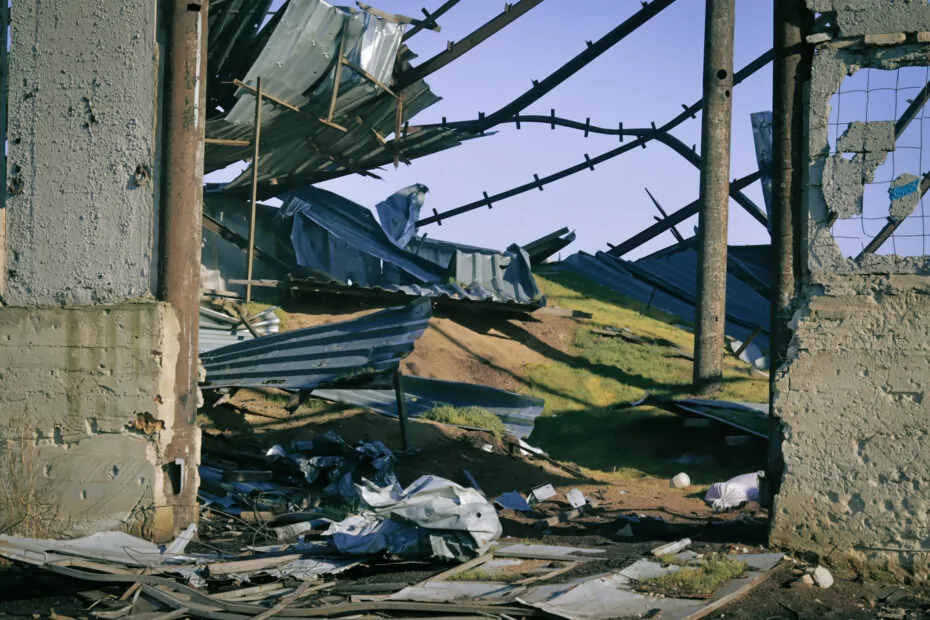
We meet our military men with «trophies». They were demining the village and found loads of garbage left by Russian soldiers. Everywhere, where Russians lived, they installed the TVs and DVDs for some reason. Maybe they watched propaganda movies on it, but their true motives remain a mystery.
Moreover, at the places of their dislocation, other noticeable things were found.
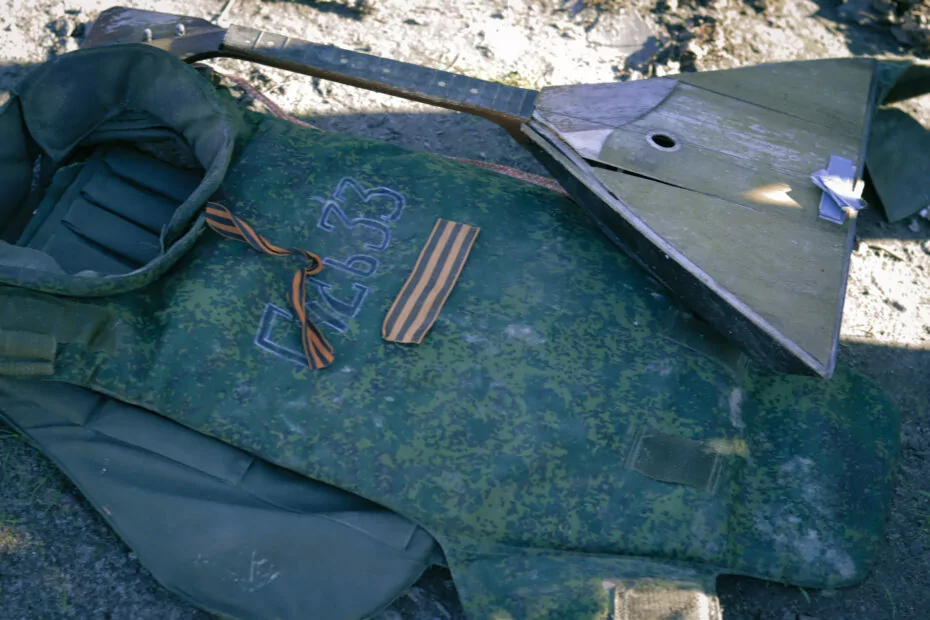
The occupants left a mess in people’s houses where they lived, littered just where they ate. And somewhere in the yard remained the photos of real house owners, reminding us of life that had been raging here before the full-scale war.

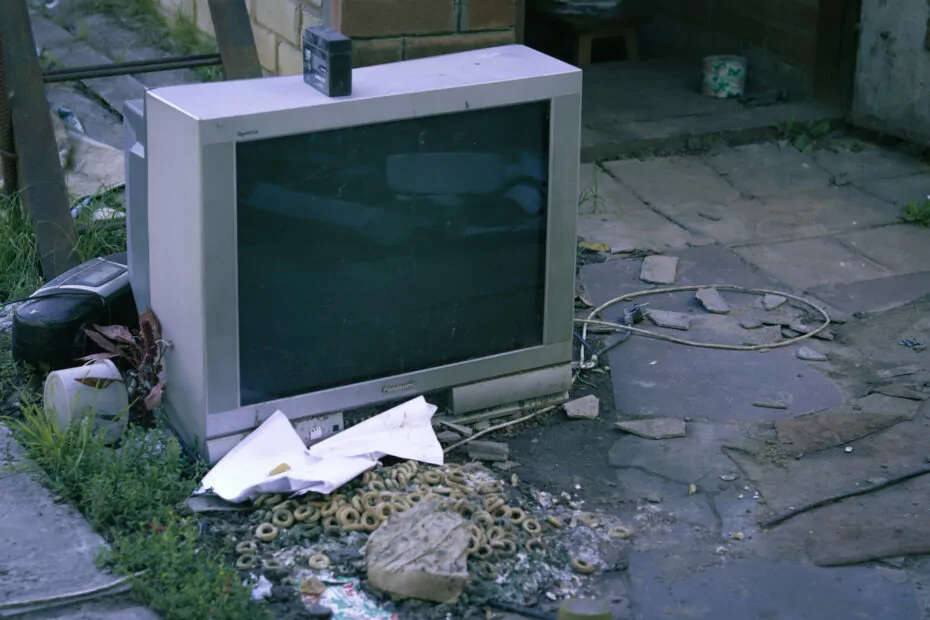
We move further. Everywhere we see the details of cassette bombs – we come across them nearly on every street.
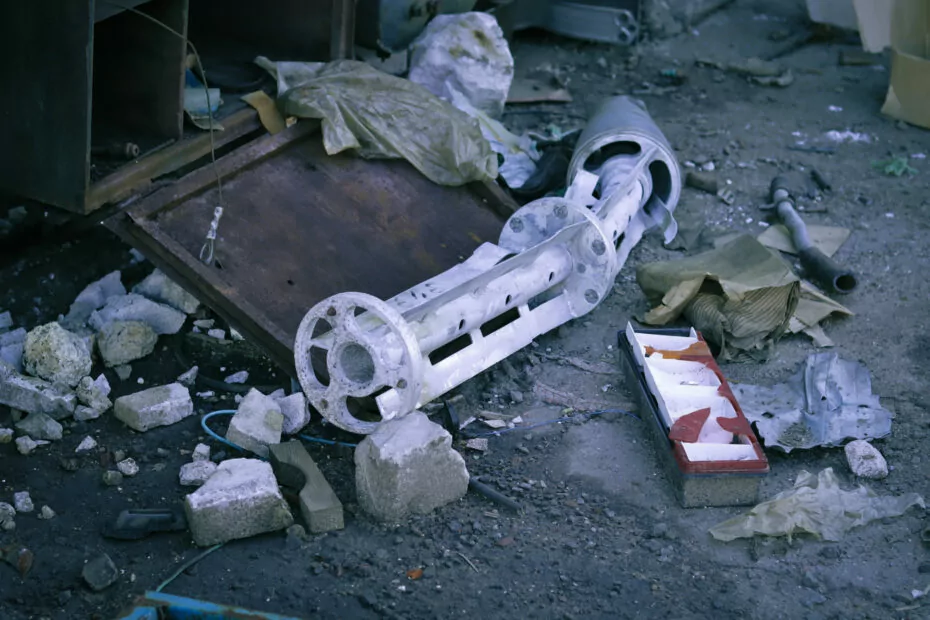
We get to know another Kamianka resident Halyna Leonidivna. We find out that the woman lived here for the whole time of the occupation.
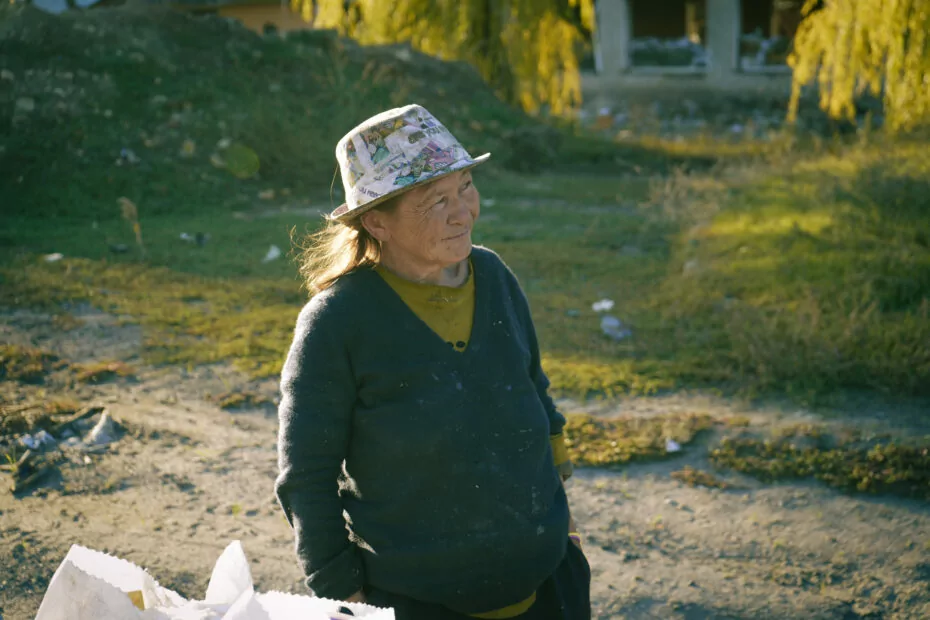
Halyna got injured on the very first days of the full-scale war. When we ask her about how she was treated, she says:
There were no doctors. The bullet went through, I covered the wound with feminine pads on both sides, and that saved me.
We see a wheelbarrow near the woman – she carries water and the remnants of Russian humanitarian aid there. “It [humanitarian aid] is only suitable for feeding goats,” Halyna says.
Before meeting Halyna we saw an empty basement nearby. It appears that a church used to be at this place. Probably, Russians considered it to be a «strategically important object» too because literally nothing was left of it.
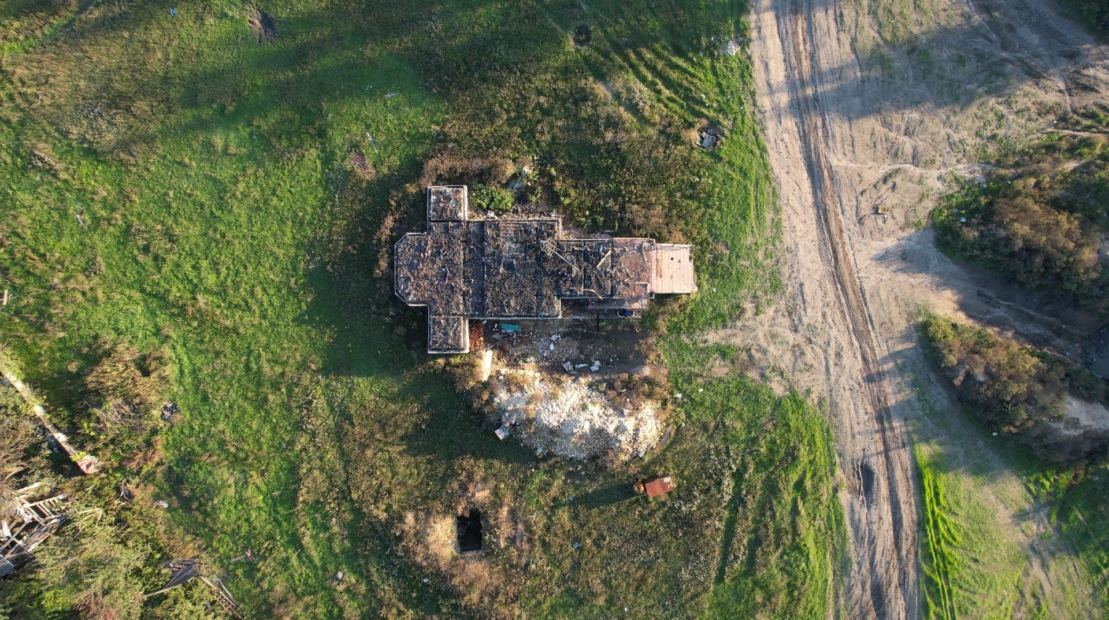
Without hoping to meet anyone, we drive to the other side of the village, and a surprise is waiting for us there: two men have come to see what is left of their houses.
Pavlo had not spent a long time under occupation. He and his family left after the full-scale invasion started. The occupants lived in their houses. The man hospitably invited us to look at what happened to his home.
We see six letters Z on the gates at once — it seems that only a perverted mind could draw them that many times. The «guests» have left a total mess: the remnants of food, bottles scattered around, and either Z or V drawn on every door. The man says that they had a lot of tomatoes, potatoes, and other goods in the cellar. Obviously, nothing has been left from all that supplies.

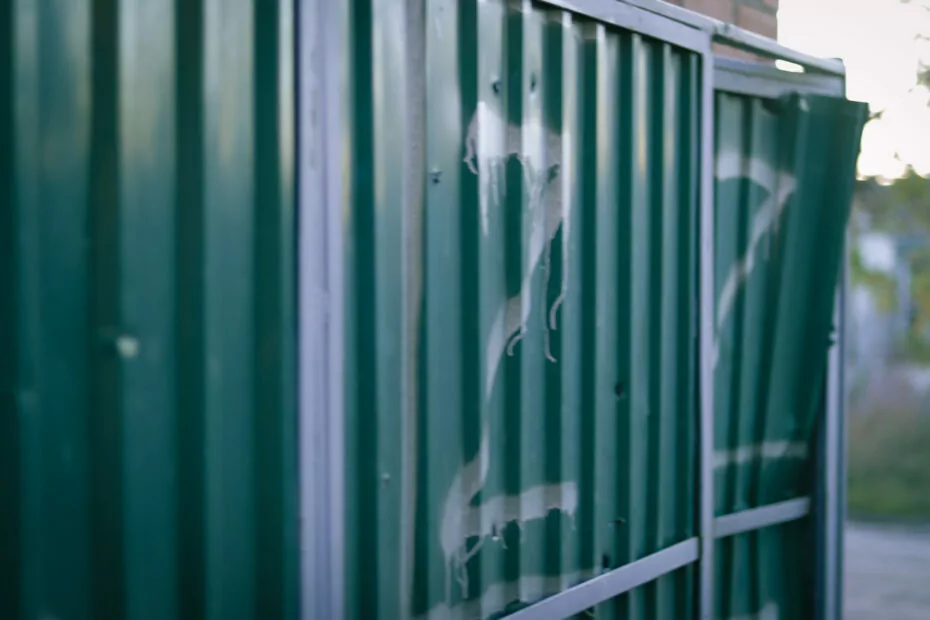
Occupants cut off the plugs from all the house equipment. Finally, they left a «surprise», corn sprouting on the floor. Probably it has been done to attract mice to the house, or just to ruin the building.
When we ask about Kamianka before the war the man gets emotional, tears appear in his eyes.
On the eve of the full-scale invasion, Pavlo and his family made a renovation: installed new stretch ceilings and bought new household appliances. Now they have neither energy nor money to restore everything.
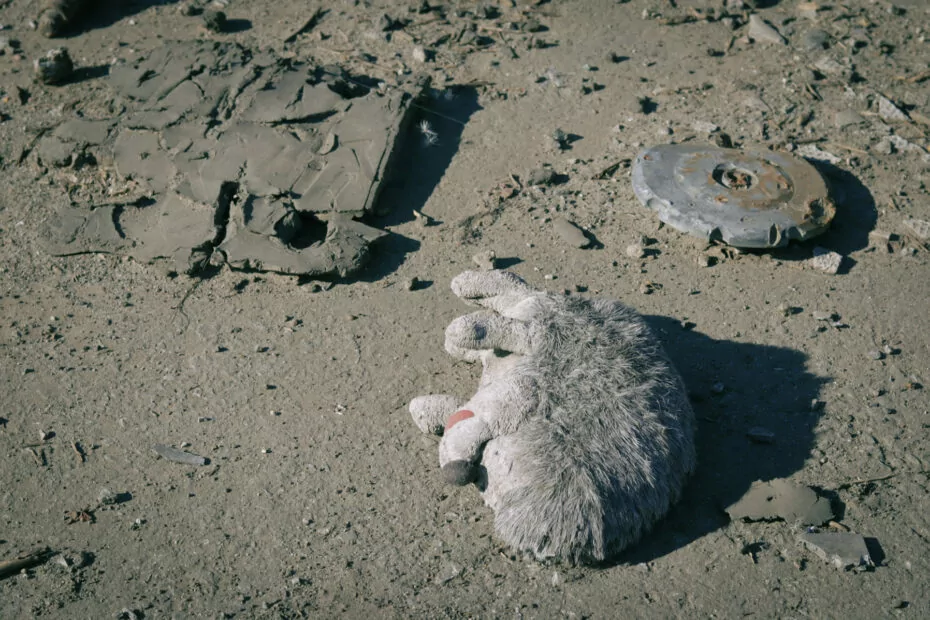
There are hundreds of such stories in Kamianka. We report from the liberated territories of Kharkiv Oblast since we do not want the victims of the war to remain just sad statistics in people’s memory.
All the world should know about the war crimes the Russian army committed on Ukrainian territory.
Translated by Anastasiia Shevtsova
Edited by Tetiana Fram

